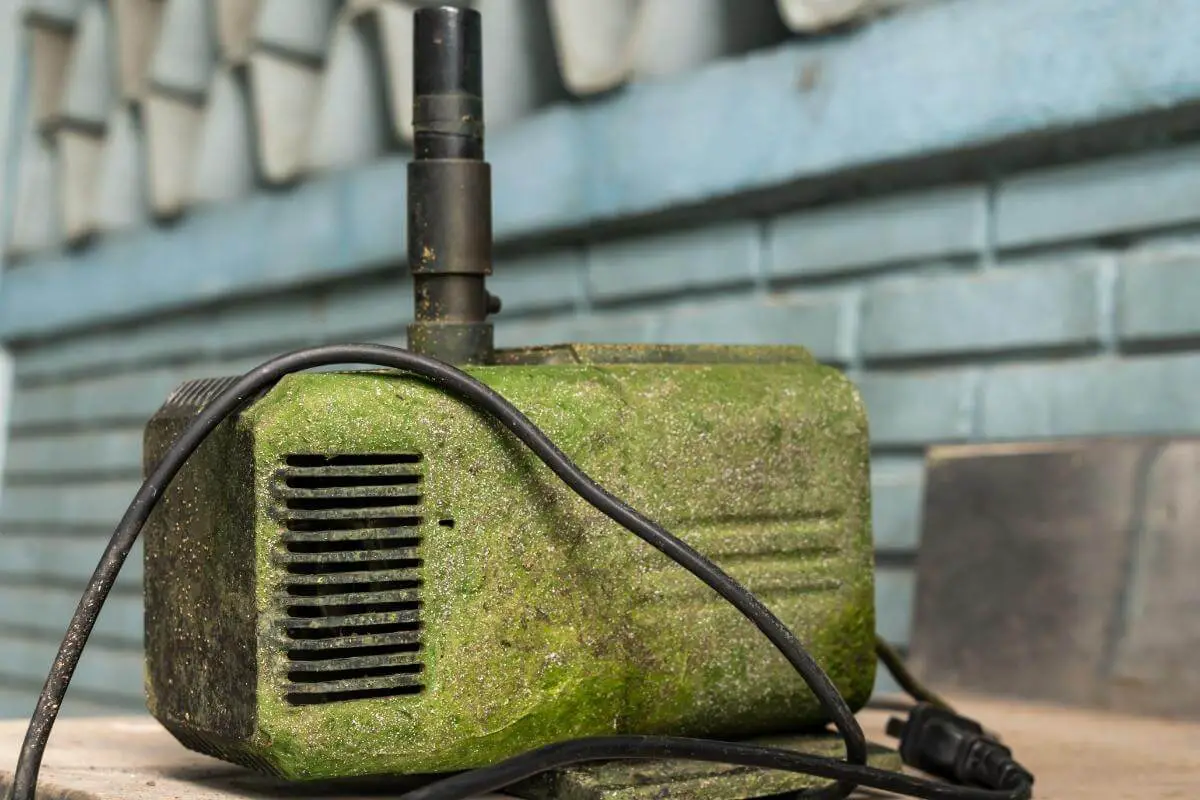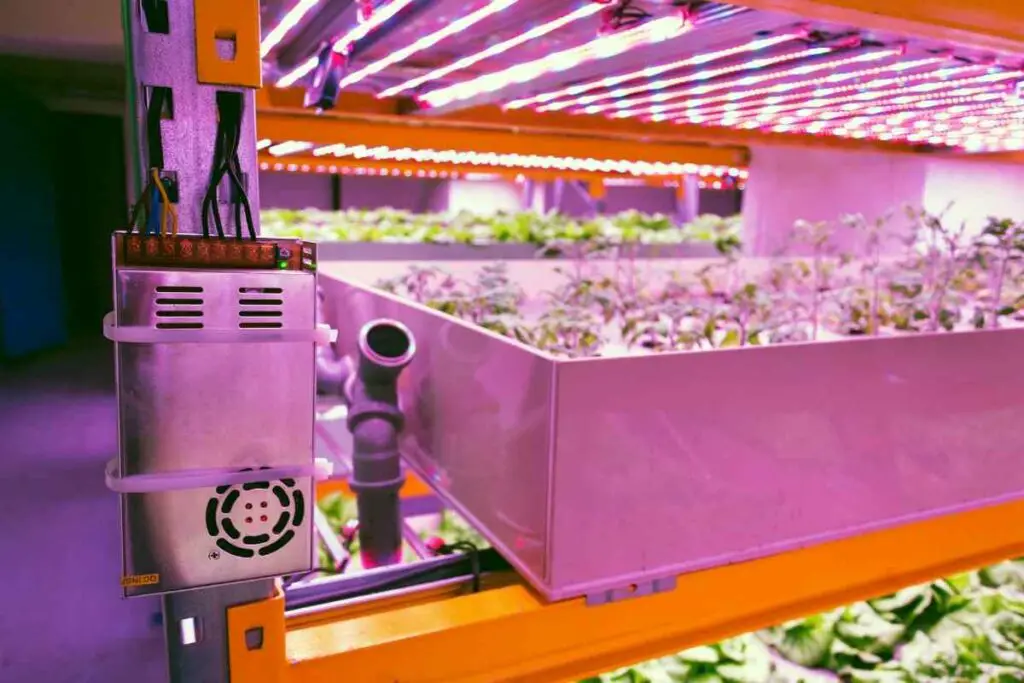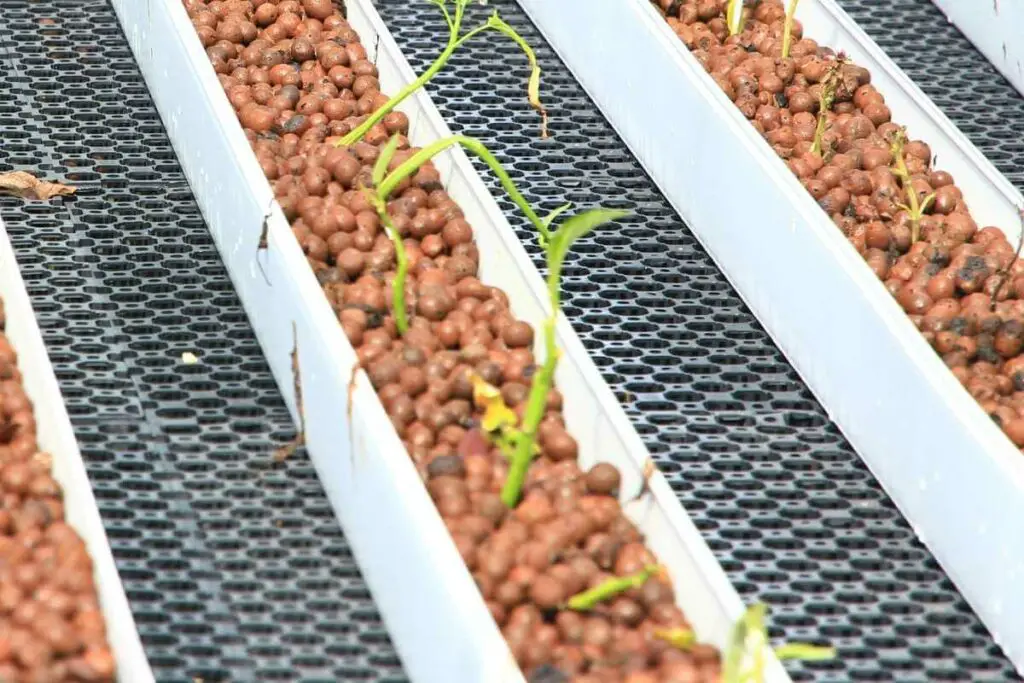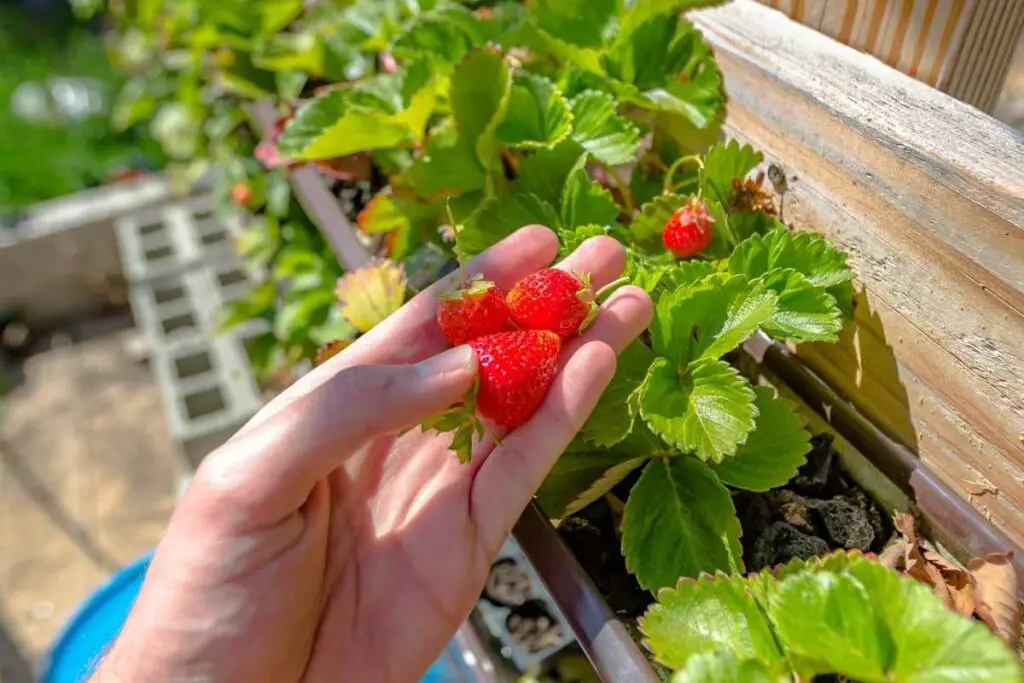Pumps are the heart of every aquaponics system, and choosing the right size goes a long way in making your system flawless.
Primarily, pumps help circulate water and nutrients needed by the fish and the plants in the system.
The fish in the tank will excrete waste into the fish tank, and then the pump will force the water through biofilters for bacteria to convert the waste into ready to absorb nutrients.
Furthermore, the pump will pump the nutrient-rich water from the fish tank to the grow beds or towers.
Pumps also raise the water level to the needed height, especially in aquaponics with vertical grow beds.
Moreover, some pumps also double up as aerating equipment to add oxygen to air-tight systems, such as the deep-water culture (DWC) systems.
Here are three pumps for three different size Systems
Vivosun 1600 GPH ( Small-sized system ) Amazon Link
Alpine 3100 GPH ( Medium-sized system ) Amazon Link
Anjon 4000 GPH ( Large systems ) Amazon link
What Are the Types of Pumps Used in Aquaponics Systems?
There are two main types of pumps used in aquaponics.
These are:
- Submersible pumps
- Inline pumps
Submersible Pump
This type of pump is submerged in the fish tank, where it forces the water out through a hose attached at the top of the pump.
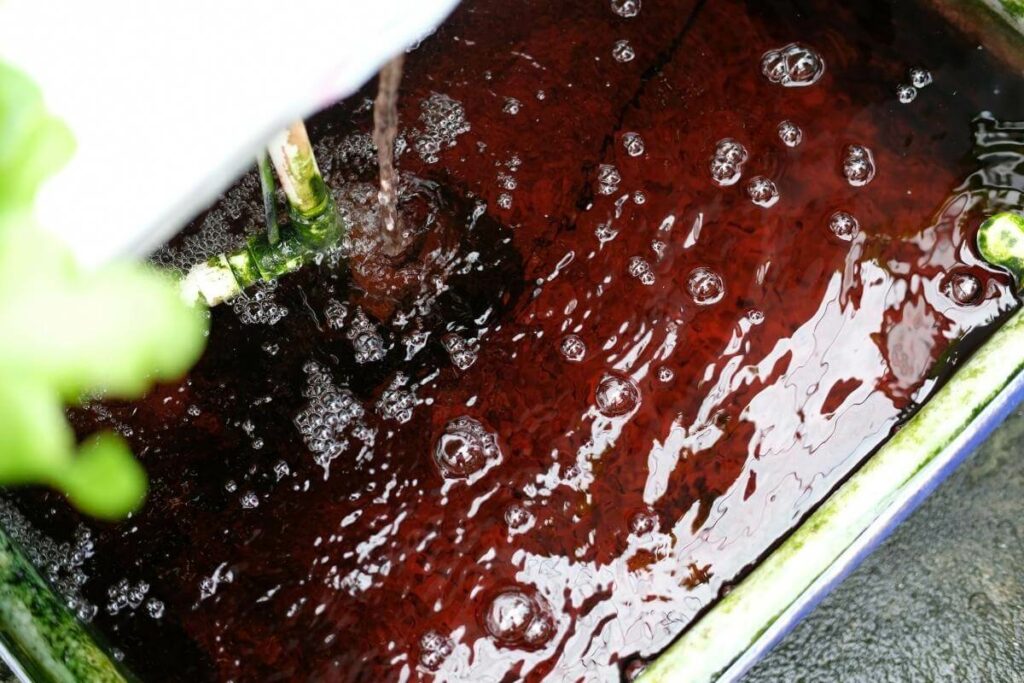
It works best for hobbyists and small-scale aquaponics systems whose water quantity does not go beyond 2400 gallons.
Most water pumps are categorized according to the amount of water they can pump per hour.
This is denoted as gallons per hour (GPH). Submersible pumps are suitable for aquaponics with utmost 1200 GPH.
The Pros of Submersible Pump
- They are pocket-friendly
- Their ease of set up makes them beginner-friendly
- They don’t produce a lot of noise
- It is cooled by the water, making the system self-sufficient
The Cons of Submersible Pump
- They cannot sustain large aquaponics due to their limited GPH
- Maintenance and repair of these pumps can be challenging, and the water erodes them over time
Inline Pumps
Inline pumps are placed outside the fish tank.
They pump more water than the submersible type, making them the best choice for large commercial aquaponics systems.
Unlike the other pumps that are sized by the gallons they pump per hour, inline pumps are categorized by horsepower(HP).
The pump is placed between the fish tank and the grow bed, where one tube pulls water from the tank while another forces water from the pump to the grow bed.
The Pros of Inline Pumps
- An Inline pump is a high-power motor device that can serve large aquaponics flawlessly
- This pump is air-cooled and is not susceptible to water corrosion
- It can be used as aerating equipment to add oxygen to the fish tank and grow bed. This prevents the death of fish or rotting of plant roots
- It has a longer life-span than most pumps
The Cons of Inline Pumps
- It is costlier than the submersible type
- The motor system requires a lot of power to run and is noisy
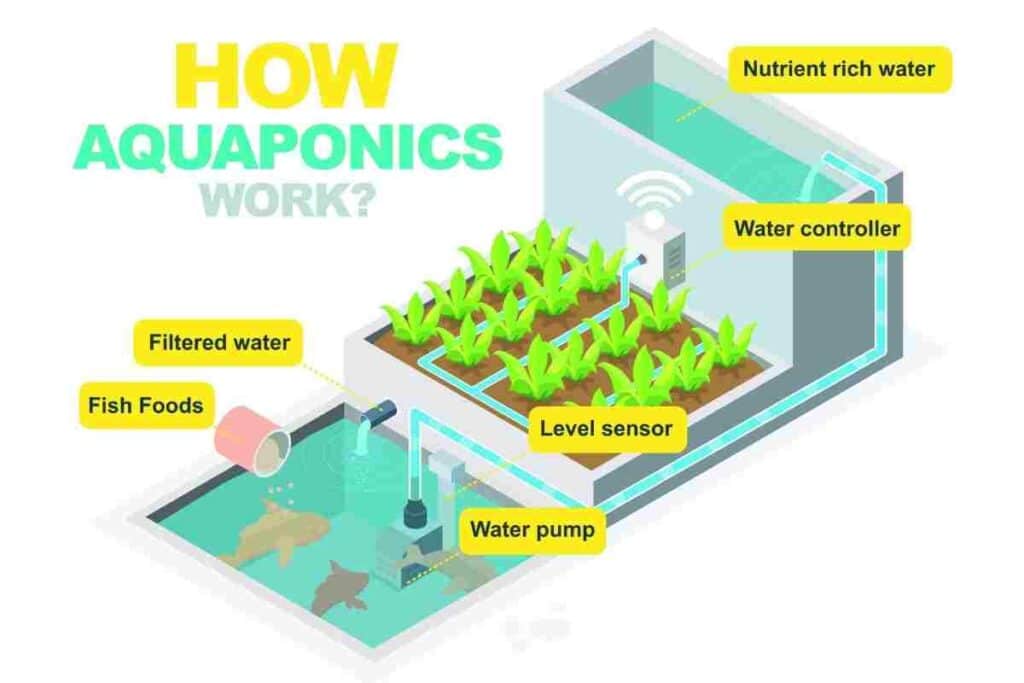
How to Choose the Right Size Aquaponics Pump
Choosing the right size of the pump is vital to avoid stressing your plants and fish.
Too large pumps will bombard the fish and plants with excess nutrients and water, which may cause death or poor health.
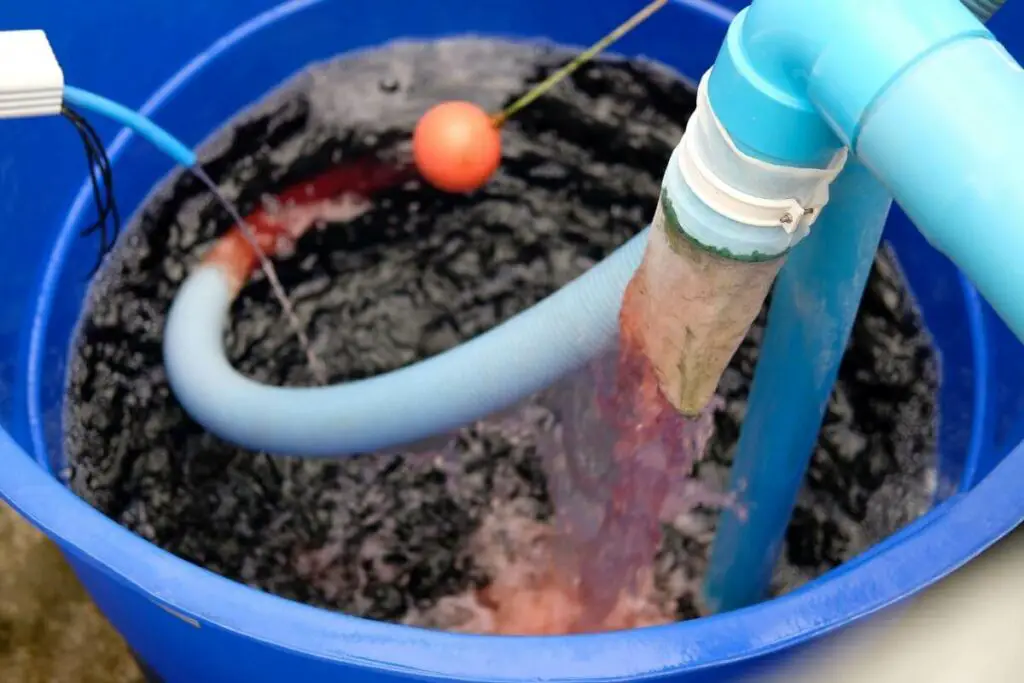
Too small pumps will pump inadequate water and nutrients, leading to poor productivity and nutrient deficiency.
There are three steps to choosing a suitable aquaponics pump size.
These are:
- Calculating the GPH( gallons per hour)
- Estimating your aquaponics system’s head height
- Combining GPH and head height
Step 1 – Calculating the GPH
This step depends on whether you are using a submersible or an inline pump.
Most pumps come with a GPH rating, but others may have the Litre per hour (LPH) sizing.
A water pump is supposed to pump all the water in two hours.
Therefore, a suitable aquaponics pump size pumps half the total amount of water in one water.
For example, if your aquaponics system has a total of 1000 gallons of water in one hour, the suitable pump should pump at least 500 gallons.
Therefore: The right pump should have a 500GPH rating.
Step 2 – Estimating the Head Height
The head height is the distance between the waterline in your fish tank, and the top of the grow bed or tower.
For instance, if you are using a submersible pump and the water level is 2 feet above the ground level and want to pump the water to a grow bed 3 feet above the fish tank water line, your head height is 5ft(2+3).
The easiest way to estimate your head height is by measuring the distance between your fish tank’s water level and the grow bed water level with a ruler or measuring tape.
Longer head heights, such as vertical grow beds and grow towers, need larger pumps that consume more power than systems with a short head height.
Grow beds at the same level with the fish tank’s waterline are said to have no head.
Step 3 – Combining GPH and Head Height
The right aquaponics pump size should be an intersection between the GPH and the head height.
Most manufacturers will provide a chart with the two variables to check your system’s values against the graph.
These charts are unique for every brand, and you should never use one brand’s chart to determine the suitable pump from another brand.
Reading and Interpreting the Curve on the Graph
Most manufacturer manuals will have the GPH/head height graph with illustrated curves.
To estimate the ideal pump for your aquaponic, go to the y axis, read your matching value and draw a horizontal line to cut across the curves.
Read the values on the x-axis as well and draw a vertical line.
Where the vertical and horizontal lines intersect, that is your ideal aquaponics pump size.
Wrap Up
Planning the installation of an aquaponics system needs to be a precise process to avoid creating a problematic project.
Whether you are a hobbyist or looking to create a big commercial aquaponics, you need to choose the right aquaponics pump size.
A submersible pump is ideal for hobbyists and small-scale farmers because the pump cannot exceed 1200 GPH.
Large commercial systems need inline pumps with more motor power to pump large amounts of water.
Regardless of the type of pump, choosing the right one for your system depends on two factors, namely, the GPH and the head height.
As illustrated by the manufacturer’s graph, the ideal pump is an intersection between the GPH value and the head height.
